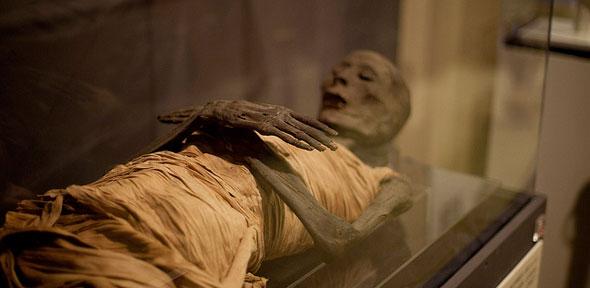A study, published on 30 May, in Nature Communications journal that includes data from 90 mummies, revealing that these mummies are closely related to ancient Middle Easterners, implying that North Africans have different genetic roots.
The mummies were more related to ancient Europeans and Anatolian than to modern Egyptians.
“Our analyses reveal that ancient Egyptians shared more ancestry with Near Easterners than present-day Egyptians, who received additional sub-Saharan admixture in more recent times,” according to the study.
The mummies belong to only one archeological site, it was a home to a cult of Osiris, god of the dead, and the site is located 70 Kilometers south of Cairo.
The DNA of the mummies found in Abu-sire El-Malek archeological website, buried between 1380 bc, during Egypt’s New Kingdom, and ad 425 in the Roman era, was subject to one of the biggest genetic analyses ever conducted.
In the study, it was revealed that the DNA was extracted from teeth and bones. Researchers admitted that their sample may not be representing all of ancient Egypt. The DNA technique was not used before as the mummified soft tissues are contaminated, hence it made difficult to determine if the obtained DNA is ancient or modern.
However, the new study led by Johannes Krause, a geneticist at the Max Planck Institute for the Science of Human History in Jena, Germany, used modern methods to read DNA only associated with ancient DNA.
“This study changes the way we think about ancient Egyptians. So genetically, they are a Near Eastern population, not African population, if you define African as sub-Saharan African,” says Krause in the study.
The study continued that Egypt saw growing numbers of foreigners working, living and from foreign invasions. It was almost always subject to foreign dominations by Libyans, Assyrians, Kushites, Persians, Greeks, Romans, Arabs, Turks and Brits. Hence, it led to genetic exchange and entanglement.
An Egyptologist at University College London said that he is particularly suspicious of any statements asserting the perspective of Europeans and North Americans that there is a discontinuity between ancient Egyptians and the modern population. He added that making statements like this one should be cautious.
The scientists wrote in their study, “We find that ancient Egyptians are most closely related to Neolithic and Bronze Age samples in the Levant, as well as to Neolithic Anatolian and European populations.”
Calls for caution have surfaced after the study had announced its results, as the sample used in the study was rather limited.







Comments (0)